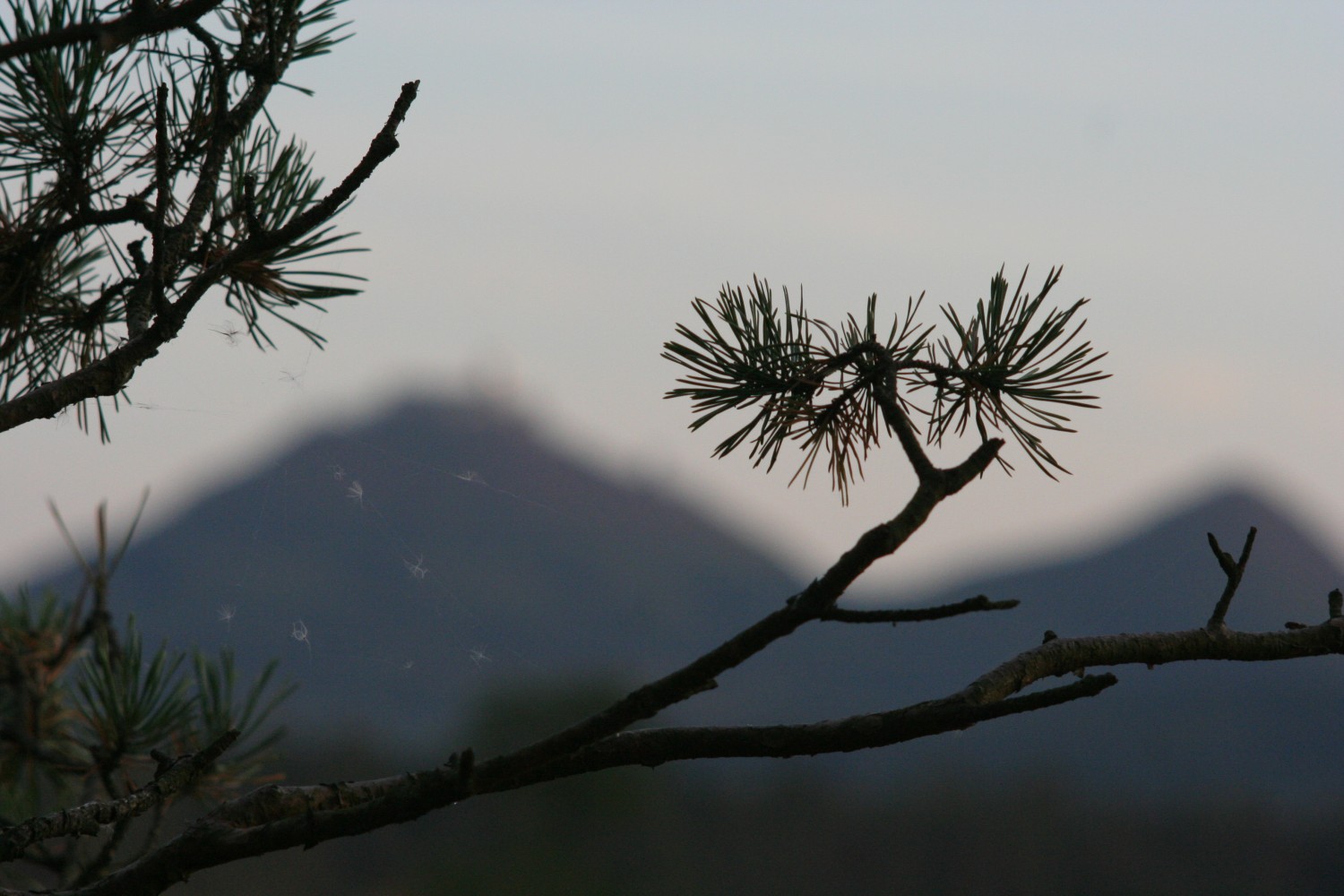
13.12.2012 18:00:00 - 26.01.2013
The existence of a taiga in Northern Bohemia between Mimoň and Doksy is not a fiction, but a standard scientific fact. This exhibition is dedicated to science bordering on art.
The title of the exhibition is not only a reminiscence of the twenty-year long stay of Soviet troops in the area north of Bezděz (although messages written in Cyrillic can be found everywhere in the area), it deserves a more detailed explanation: Taiga is a wholly specific type of landscape, covering the entire area ranging from Scandinavia all the way to Siberia. On the territory of what is today the Czech Republic, there used to be taiga as well, soon after the Ice Age, but it disappeared already during the several thousand years that followed. With one exception: the relatively small area delimited by Doksy, Česká Lípa, Stráž pod Ralskem, and Bakov and dominated by the well-known silhouette of the Bezděz castle with its two towers.
This “taiga of Bezděz” is persistent and tough. Humans have always been rather careful when entering it; in prehistoric times, they tended to avoid it. Medieval settlements stopped at its borders, and the royal towns of Doksy, Bezděz, and Kuřívody, grandiosely founded by the King of Bohemia, Přemysl Otakar II, almost vanished and went to seed after few decades – there were no villages in the area, and the marshes were avoided by both colonists and merchants. All that was left was the royal castle of Bezděz, a towering symbol of power – and a few villages with telling names: Holany (“Bare Village”), Heide (“Heathland“ or “Pinewood”), Annaheid – Boreček and Kleinheide – Malý Bor (both names meaning “Little Heath” or “Little Pinewood”) or Kummer ( “Misery” or “Sorrow” – today known as “Hradčany” or “Castle Area“).
Interventions into the landscape remained limited to alternate farming. More than two hundred fish ponds were built in the area in the Middle Ages and the Modern Era – and subsequently disappeared again. Everybody knows the “Velký rybník” (the so-called “Great Pond”) of Charles IV – the Máchovo jezero (Mácha Lake) of today. Břehyňský rybník (The Břehyně Pond), only a little younger and slightly smaller than Máchovo jezero, is a real reservoir of history for archaeology and botany. To this day, thousands of wooden pieces of pond constructions and thousands of tree stumps cover its bottom, remnants of a medieval forest that was cut down and flooded when the pond was built.
The region of Bezděz was a reservoir of wood where forest crafts thrived until the Modern Era. Today, however, it is difficult to find traces of the narrow gauge railway that transported wood from Hradčany to Mladá Boleslav, or the famous Kittel glassworks in the village of Strážov, which does not exist anymore.
The region became a favourite haunt of soldiers, and Bezděz was a favourite place from which manoeuvres could be watched through binoculars. A remnant of the “potato war” at the end of the eighteenth century, the fort of Bída (“Misery”), a huge fortification system near the village of Hradčany, was left here, a sentry gone missing in the woods. Sometime later, soldiers came and stayed in the region for half a century – first Germans, then Czechoslovaks, then Russians. The town of Kuřívody was now called Ralsko, and nearly disappeared as well. With the soldiers, the taiga came back – and paradoxically, the “decultivation” of the landscape brought about by them helped to preserve the taiga.
Photographs of the “taiga of Bezděz” are not and cannot present a systematic and exhaustive view through the eyes of a photographer, an archaeologist, and a biologist. Their unifying element is an effort to capture “the anatomy of a landscape” through certain artistic means. For the most part the photographs present solitary objects that the usual tourist would not get to see (or else they were taken in an awful weather). Only through adding up these details, one can – or so we believe – give an idea of a landscape that is not to be found anywhere else in Bohemia.
authors:
RNDr. Jiří Sádlo, CSc. (1958) biologist, the Institute of Botany of the Academy of Science of the Czech Republic
PhDr. Petr Meduna, PhD. (1963) archaeologist, the Institute of Archaeology of the Academy of Sciences of the Czech Republic
Mgr. Petr Pokorný, PhD. (1972) biologist, the Institute of Archaeology of the Academy of Sciences of the Czech Republic
Mgr. Jan Daňhel (1971) photographer, experimental film maker, and teacher at FAMU (Film Academy), Prague Radoslava Schmelzová - art historian
guests: artists Miloš Šejn and David Helán, music journalist Pavel Klusák